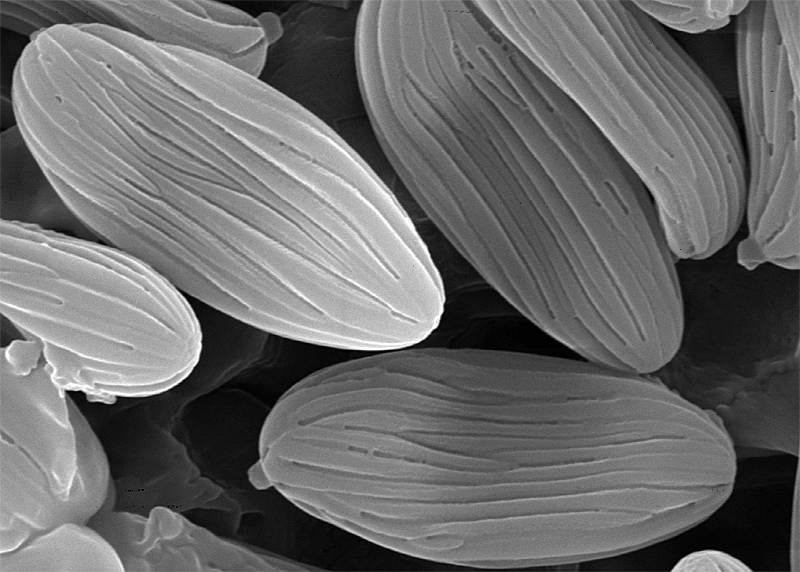Fine structure of surface ornamentation
The type section of Boletellus is typified by B. ananas. These species can be grossly characterized by their squamose-scaly pilei, and ribbed spore ornamentation. Under the light microscope, there appear to be cross striations on the ribs (except B. ananiceps), but with the SEM, there are holes on the sides of the costae of B. deceptivus, indicating the presence of lacunae in the spore wall. There are indentations or holes evident in B. ananas, B. dissiliens and B. emodensis, but absent in B. ananiceps. Perreau-Bertrand (1967) provided transmission electron micrographs (TEM) of sections through spores of B. chrysenteroides, illustrating that within the costae, there are electron-transparent lacunae. The lacunae would cause refraction patterns when spores are viewed with transmitted light and appear as the cross-striate bands on spore costae. Such patterns are especially evident for B. ananas, B. deceptivus, B. dissiliens and B. emodensis, whereas they are not apparent in B. ananiceps. [extracted from Halling et al. (2015) Austral. Syst. Bot. 28: 1-22. 2015)
J. Perreau-Bertrand. 1967. Recherches sur la differentiation et la structure de la paroi sporale chez les Homobasidiomycètes a spores ornées. Annales des Sciences Naturelles. Botanique et Biologie Végétale XII 8, 639–745.
R.E. Halling et al. 2015. Evolutionary relationships of Heimioporus and Boletellus (Boletales), with an emphasis on Australian taxa including new species and new combinations in Aureoboletus, Hemileccinum and Xerocomus. Australian Systematic Botany 28: 1–22.

Boletellus ananas

Boletellus ananiceps

Boletellus deceptivus

Boletellus dissiliens
